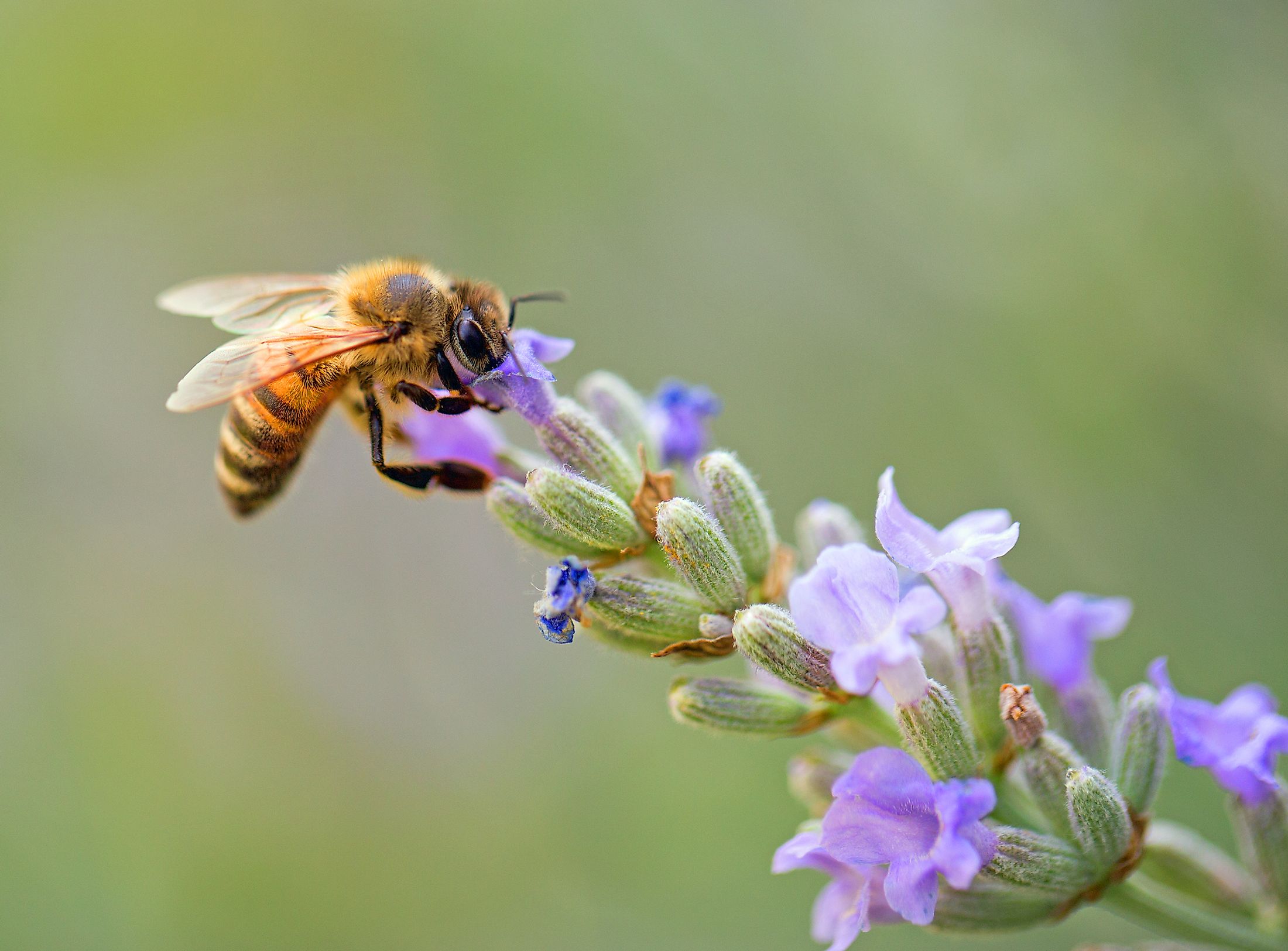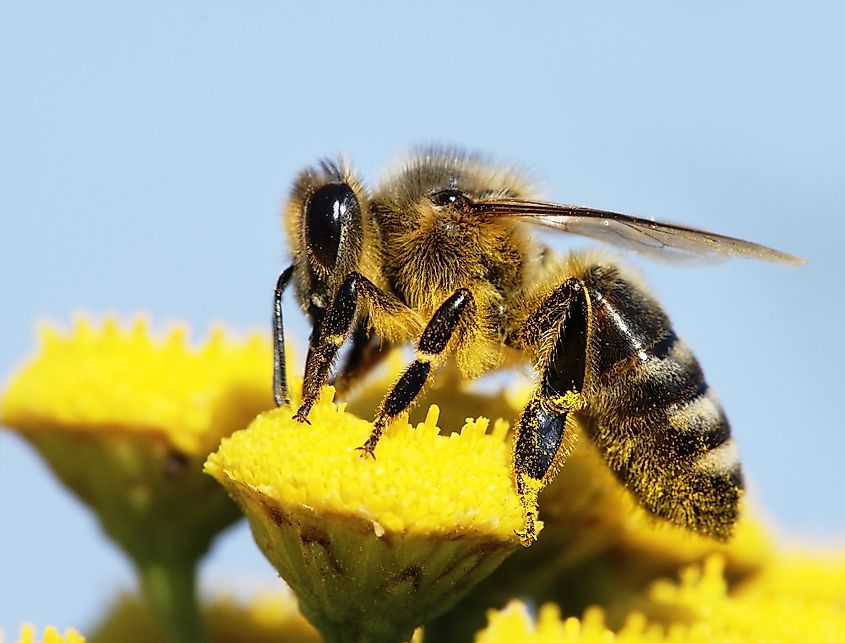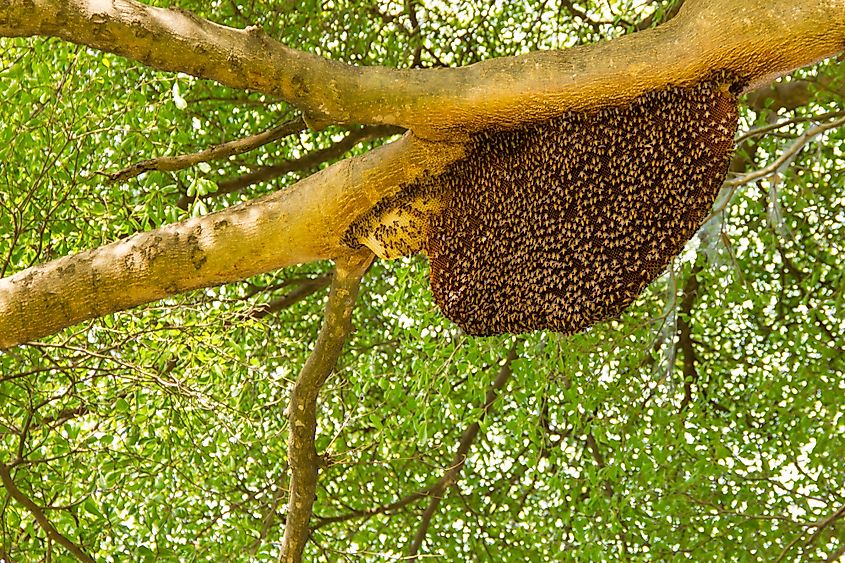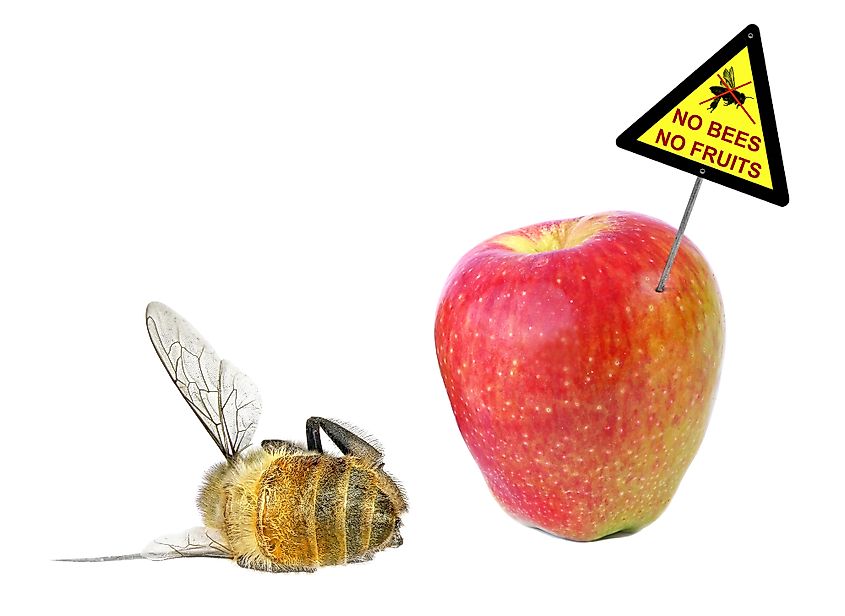
10 Interesting Facts About Honey Bees
Honeybees are fascinating creatures. While some may think of them as pests, they are vital for the functioning of local and global ecosystems. We rely on bees for so much of our food - not just honey - because they are the primary pollinators of most flowers. Often a symbol of hard work, these tiny insects are resourceful, intelligent, and live highly organized lives. Sporting a black and yellow striped body, four wings, antennae, and a stinger, these creatures are far from threatening but actually a source of our well-being on this planet.
Bees Are Important For The Environment

Honeybees have a very important job that greatly impacts our environment and biodiversity. Bees travel from flower to flower to collect pollen and nectar for food. In doing this, they help to pollinate flowers, spread pollen across a given area, and ensure flowers and plants thrive, grow, and continue to populate their region. Thus honeybees help maintain biodiversity, an important part of a healthy ecosystem. Because bees pollinate the flowers of our crop plants as well, they are important for agricultural yields as well. This means bees are crucial to ensuring that we - and other animals - have enough food to eat.
Bees Can See In The Ultraviolet Spectrum
Unlike humans, honeybees are able to see in the ultraviolet (UV) spectrum. Many flowers have ultraviolet reflectance at their center, creating a ‘nectar guide’ for bees and other insects. The honeybees can see this light at the center of the petals and are drawn to the flowers to collect nectar and pollen. This ability helps both the bees easily find food and also ensures the plant gets pollinated by the bees.
Honey Bees Have Designated Duties

Honey bees live in hives, and each type of bee has a different role to play within that hive. There are three main types of honey bees:
- Queen: A hive is ruled by a single queen, who is always female. The queen bee lays eggs to populate the entire hive. A queen bee lays an average of 1,500-2,500 eggs per day.
- Workers: All worker bees are female bees. A worker bee’s job is to search for food in the form of nectar and pollen, create honey, build the hive, protect it, and also keep it clean. A worker bee only lives for an average of five to six weeks.
- Drones: Drone bees are the male bees in a hive. Drone bees mate with the queen bee to produce young. There are, on average few hundred in each hive during the spring and summer. However, they are rejected in winter when bees conserve energy resources.
Bees Have A Strong Sense Of Smell
Bees have 170 different odor receptors, meaning their sense of smell is quite strong - especially for their size. Bees use smell to tell the difference between different species of flowers but also to find their hive. Pheromones in the hive ensure they do not lose their way and are always able to smell their way home. Smell is also important in the structure and communication within the hive. The Queen Bee has a specific pheromone which signals her as being the bee in charge of the hive. She also uses this signal, and other pheromones, to ensure workers are doing their job and working together and that no reproduction or queen rearing takes place among workers.
A Queen Bee Can Live Up To 5 Years

In a hive, there is only one queen at a time. If, however, the queen is aging or sick, it starts to produce less of her pheromones, and worker bees will quickly start to rear a new queen from the young brood. It only takes an average of 12-24 hours from the time the bees feel this reduced pheromone level to the time they begin the new rearing process. A larva, or baby bee, is selected and fed “royal jelly” for it to grow into a new fertile queen bee.
It Needs A Lot Of Bees To Make Honey

One worker bee makes an average of 1/12 of a teaspoon of honey in its whole life. While this is not a particularly large amount, the sheer volume of bees in a hive (on average 20,000 - 80,000 bees) means that large colonies can produce hundreds of pounds of honey per colony. Additionally, though bees eat the honey they make, worker bees make roughly 2-3 times more honey than they need, which is why humans are able to enjoy this treat without taking away from the supplies the bees need to survive.
Bees Communicate Through Dance
Bees will tell one another about a particularly good food source by doing a very specific figure eight-style wiggle or dance. This movement communicated to the others in the hive the direction of the good food source so that others could also enjoy it.
Honeybees Are Excellent Fliers

Honey bees fly at roughly 15 miles per hour, beating their wings about 200 times a second or 12,000 beats/minute. To make one pound of honey, a hive of bees will travel roughly 55,000 miles.
It Takes A Lot Of Nectar To Make Honey
During a single flight from the hive to collect nectar, a bee will visit 50-100 flowers on average. Nectar is very sweet, but it is also around 70% water. Honey, on the other hand, is only 17% water, so bees have to collect a large amount of nectar and slowly remove the moisture for it to become the honey both we and they love. Worker bees will fan their wings over the honey cells in quick succession to blow fresh air over the surface and help the moisture evaporate.
Bee Populations Are Declining

The global honey bee population has declined for the past 15 years. This has been attributed to ‘colony collapse’ as many bees have left their hives but not returned. Though the specific reason for their decline and exodus is unknown, the general consensus is that human development, the loss of habitats, noise pollution, and pesticides have likely taken a toll on bee populations over the years. Reducing the use of pesticides and planting wild, native flowers can help bees have an easier time finding food sources and nectar-rich flowers. Ensuring bees have safe places to live and thrive is critical to maintaining a healthy, balanced planet. Learning more about the fantastic things bees do can help us coexist with these insects that many may have previously thought of as pests.
Whether it is for their delicious honey, their role in pollinating flowers, or their greater part in keeping our food sources growing, when humans and bees live in harmony, the world can be a better, more balanced place.











